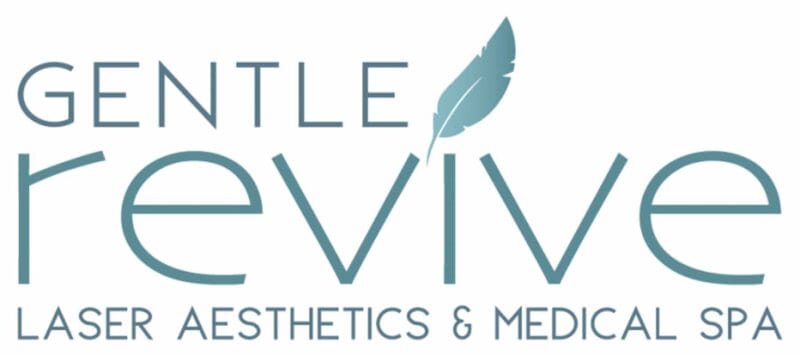After your liposuction procedure, staying hydrated, following a balanced diet, and wearing compression garments are crucial steps to ensure optimal recovery and results. You'll need to limit physical activity, prioritize rest, schedule follow-up appointments with your surgeon, and monitor as well as manage any swelling.
These strategies, grounded in medical research and professional experience, not only enhance your healing process but also maximize the longevity of your results. As you navigate the post-lipo journey, understanding the nuances behind each tip becomes essential.
Let's explore how these practices can significantly impact your recovery and the quality of your outcomes.
Stay Hydrated
Maintaining adequate hydration is crucial for your recovery process after liposuction, as it helps your body flush out toxins and reduces swelling. When you're well-hydrated, your circulation improves, enabling a more efficient delivery of essential nutrients to the tissues that need healing. This not only speeds up your recovery but also enhances the overall results of your procedure.
Experts recommend drinking at least eight to ten glasses of water daily post-surgery. However, your specific needs may vary based on your body size, the extent of your surgery, and your activity level. It's important to listen to your body and adjust your intake accordingly. Avoid beverages high in caffeine and sugar, as they can lead to dehydration, countering the benefits of water consumption.
Incorporating foods with high water content, such as fruits and vegetables, can also contribute to your hydration goals. These foods not only provide additional fluids but also supply vital nutrients that support your body's healing process.
Follow a Balanced Diet
Adopting a balanced diet is essential for your body to heal optimally and maintain the results of your liposuction procedure. After undergoing liposuction, your body needs a range of nutrients to repair itself. Protein, for instance, plays a crucial role in tissue repair and muscle recovery. Include lean sources like chicken, fish, tofu, and beans in your meals. Antioxidants found in fruits and vegetables can help reduce inflammation and support the healing process.
It's also important to moderate your intake of processed foods and sugars. These can lead to weight gain and potentially diminish the results of your surgery. Instead, focus on whole foods that provide sustained energy and essential nutrients. Hydration works hand in hand with a balanced diet to flush out toxins and assist in recovery, as discussed in the previous section.
Additionally, certain fats are beneficial post-lipo. Omega-3 fatty acids, found in fish, flaxseeds, and walnuts, can help with inflammation reduction. Remember, the goal isn't just to recover but to sustain the body sculpting results achieved through liposuction. By adhering to a balanced diet, you're not only promoting healing but also investing in the longevity of your results.
Wear Compression Garments
Wearing compression garments post-lipo is essential for minimizing swelling and supporting the healing tissues as they adjust to their new contours. These specialized garments play a pivotal role in your recovery process by applying gentle, consistent pressure to the treated areas. This pressure not only helps reduce the risk of fluid accumulation, which can lead to complications such as seromas or hematomas, but it also facilitates the body's natural healing process.
The mechanism behind compression garments is firmly rooted in medical science. They enhance blood circulation, which is crucial for delivering oxygen and nutrients to the healing tissues, thus speeding up the recovery. Furthermore, improved blood flow helps in flushing out harmful toxins and reducing inflammation, leading to a smoother and more uniform healing process.
It's important to choose the right type of compression garment. Your healthcare provider will recommend a garment that's specifically designed for the area treated with liposuction. It should fit snugly but not so tight that it causes discomfort or restricts blood flow. Typically, you'll be advised to wear your compression garment for a set period, often several weeks, depending on the extent of your procedure and your individual healing rate.
Limit Physical Activity
While ensuring you're wearing the right compression garment, it's equally crucial to limit your physical activity during the initial stages of recovery to prevent complications and promote optimal healing. After liposuction, your body needs to repair itself, and engaging in strenuous activities too soon can increase the risk of swelling, bruising, and even more serious issues like seromas or hematomas.
Healthcare professionals often advise patients to avoid vigorous exercise and heavy lifting for a period ranging from a few days to several weeks, depending on the extent of the liposuction and the individual's overall health. It's not just about avoiding the gym or skipping your morning jog; even activities that might seem benign, such as extensive walking or carrying groceries, need to be approached with caution.
Light activities, however, are encouraged as they help promote blood circulation, which is vital for recovery. Gentle walks can be beneficial, but it's essential to listen to your body and not push beyond mild exertion. Remember, every person's recovery timeline is unique, and it's important to follow the specific guidelines provided by your surgeon. Resuming physical activity gradually and under medical advice ensures you won't jeopardize your results or health.
Prioritize Rest and Recovery
Prioritizing rest and recovery after liposuction is crucial for your body's healing process, ensuring complications are minimized and desired outcomes are achieved. After undergoing such a procedure, your body needs ample time to heal and adapt to the changes. It's essential to give yourself permission to slow down and rest, which can significantly impact your recovery speed and comfort level.
During this period, your body is working hard to repair itself. Swelling and bruising are common, and rest aids in reducing these effects more rapidly. It's not just about physical rest but also mental relaxation, which can enhance your body's ability to heal. Stress can negatively impact your recovery, so engaging in relaxation techniques, such as deep breathing or meditation, can be beneficial.
Ensure you're getting adequate sleep. Quality sleep promotes healing by releasing growth hormones that help repair and regenerate tissue. Try to maintain a comfortable sleeping position that doesn't put pressure on the treated areas, which might involve using extra pillows for support.
Schedule Follow-Up Appointments
Scheduling follow-up appointments with your surgeon is a critical step in ensuring a smooth and effective recovery process after liposuction. These sessions provide an opportunity for your surgeon to monitor your healing, address any concerns, and adjust your postoperative care plan as needed. Typically, your first appointment will be within a week of your procedure, followed by regular check-ins over the next three to six months.
During these appointments, your surgeon will assess the operated area for signs of proper healing and ensure there are no complications, such as infections or seromas. It's also a chance for you to ask questions about your recovery, including activity levels, diet, and any symptoms you're experiencing.
Adhering to your follow-up schedule is essential. Missing appointments could delay your recovery or lead to unresolved issues. If you're experiencing unusual pain, significant discomfort, or any signs of infection before your scheduled appointment, don't wait. Contact your surgeon immediately.
Monitor and Manage Swelling
Following your surgeon's advice on follow-up appointments, it's also vital to closely monitor and effectively manage swelling to ensure a smooth recovery after liposuction. Swelling is a normal response as your body heals, but managing it can significantly impact your comfort and the speed of your recovery.
Firstly, wearing a compression garment as recommended by your surgeon is crucial. These specially designed garments reduce swelling by applying even pressure to the treated areas, supporting your body's natural contours as it heals. Ensure you're wearing it correctly and for the duration your surgeon prescribes.
Secondly, stay hydrated. Drinking plenty of water helps your body flush out toxins and reduces swelling. It's a simple yet effective strategy that supports overall health and aids in recovery.
Moreover, gentle movement is your ally. While it's important to rest and allow your body to heal, light walking as soon as you're able can improve circulation, helping to reduce swelling and prevent blood clots.
Lastly, follow a balanced diet. Eating foods rich in antioxidants and anti-inflammatory properties can support your body's healing process, further aiding in the reduction of swelling.
Conclusion
In conclusion, optimizing your post-lipo care is crucial for achieving the best results. Staying hydrated, maintaining a balanced diet, wearing compression garments, limiting physical activity, prioritizing rest, scheduling follow-up appointments, and managing swelling are all evidence-based strategies that enhance recovery.
By adhering to these guidelines, you'll not only speed up your healing process but also ensure the longevity and effectiveness of your liposuction outcomes. Remember, your commitment to post-operative care is as important as the procedure itself.




© All Copyrights 2023-2024 by Utah Lipo & Body Sculpting








